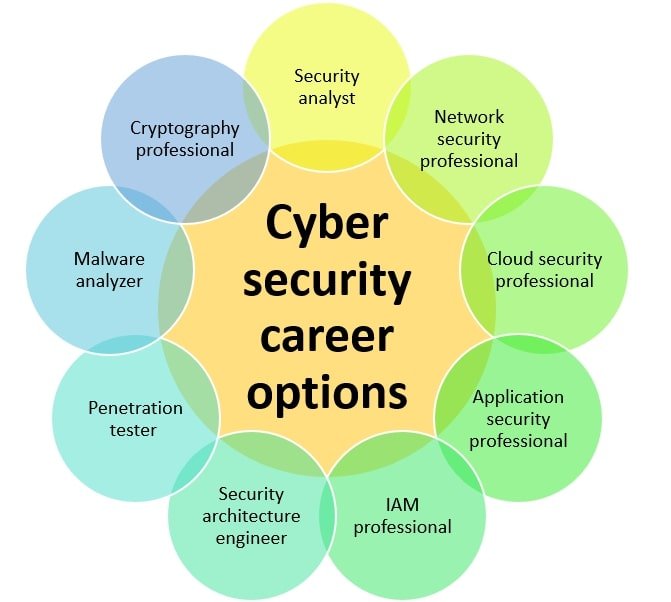
Introduction
In our fast-paced, ever-evolving digital world, the demand for cybersecurity professionals has surged to unprecedented levels. With technological advancements permeating every facet of modern life, the imperative to safeguard sensitive data and critical systems against cyber threats has reached critical importance. From multinational corporations to fledgling startups, from governmental bodies to charitable organizations, cybersecurity has transitioned from being a supplementary concern to an indispensable pillar of operations. The ubiquity of digital platforms, coupled with the increasing sophistication of cyber threats, underscores the vital role that cybersecurity plays in preserving the integrity, confidentiality, and availability of information assets.
In this article, we embark on an exploration of the current landscape of cybersecurity jobs, delving into the evolving roles and responsibilities of cybersecurity professionals, the skills and expertise in high demand, and the strategies employed by organizations to attract and retain top talent. Furthermore, we shine a spotlight on the formidable challenges confronting the cybersecurity industry, from the widening skills gap and persistent diversity disparities to the escalating threat landscape and the imperative for continuous skill development and knowledge enhancement.
The Current Landscape of Cybersecurity Jobs:
The demand for cybersecurity professionals has been steadily rising over the past decade, driven by the proliferation of cyber threats and the growing reliance on digital technology. According to a report by Cybersecurity Ventures, there will be 3.5 million unfilled cybersecurity jobs globally by 2021. This staggering figure highlights the significant gap between the supply and demand for cybersecurity talent.
One of the main factors contributing to this shortage is the rapid evolution of cyber threats. As hackers become more sophisticated and employ advanced techniques such as artificial intelligence and machine learning, cybersecurity professionals must continually update their skills and knowledge to keep pace. However, many organizations struggle to find qualified candidates with the necessary expertise to combat these emerging threats.
Furthermore, the cybersecurity industry faces a lack of diversity, with women and minority groups significantly underrepresented. According to a study by the Centre for Cyber Safety and Education, women make up only 24% of the global cybersecurity workforce. Similarly, minority groups are also underrepresented, with African Americans and Hispanics accounting for just 9% and 13% of cybersecurity professionals, respectively. This lack of diversity not only limits the talent pool but also hinders innovation and creativity within the industry.
Emerging Trends in Cybersecurity Jobs:
As technology advances, new trends shape the landscape of cybersecurity jobs. Some of the key emerging trends include:
- Cloud Security: Cloud Security has emerged as a critical aspect of modern cybersecurity due to the widespread adoption of cloud computing. As organizations migrate their data and applications to cloud-based infrastructures, ensuring the security of these environments has become paramount. Cybersecurity professionals with specialized expertise in cloud security are in high demand, as they possess the knowledge and skills necessary to configure, monitor, and secure cloud environments effectively. They are tasked with implementing robust security measures, such as encryption, access controls, and identity management, to safeguard sensitive data and mitigate the risks associated with cloud-based operations.
- AI and Machine Learning in Security: Artificial intelligence (AI) and machine learning (ML) have emerged as game-changers in the realm of cybersecurity. These technologies revolutionize traditional security approaches by facilitating predictive threat detection, automating response mechanisms, and conducting sophisticated behaviour analytics. By analyzing vast amounts of data in real-time, AI and ML algorithms can identify anomalous patterns indicative of cyber threats, enabling proactive defense measures. Consequently, cybersecurity professionals with expertise in AI and ML techniques play a pivotal role in developing and implementing advanced security solutions that are capable of adapting to evolving cyber threats with agility and precision.
- IoT Security: The proliferation of Internet of Things (IoT) devices presents a myriad of security challenges, with each connected device serving as a potential gateway for cyber-attacks. Cybersecurity specialists versed in IoT security protocols and risk mitigation strategies are in high demand to address these vulnerabilities. They must navigate the complexities of securing diverse IoT ecosystems, considering factors such as device heterogeneity, limited computational resources, and decentralized communication networks. From implementing robust authentication mechanisms to ensuring secure firmware updates, these experts play a crucial role in safeguarding IoT deployments against evolving cyber threats in an interconnected world.
- Develops: The integration of security practices into the DevOps pipeline, known as Develops, is gaining traction as organizations recognize the importance of security throughout the software development lifecycle. Develops emphasizes collaboration between development, operations, and security teams to integrate security measures seamlessly into the development process.
- Cybersecurity Governance and Compliance: With the implementation of stricter data protection regulations such as GDPR and CCPA, organizations require cybersecurity professionals well-versed in compliance frameworks and regulatory requirements. Roles focusing on cybersecurity governance, risk management, and compliance (GRC) are witnessing growth.
Future cybersecurity jobs include:
- Technical Proficiency: A strong foundation in networking, cryptography, secure coding practices, and operating systems is essential for cybersecurity professionals to understand and mitigate various cyber threats.
- Cybersecurity Tools and Technologies: Proficiency in using security tools such as SIEM (Security Information and Event Management), IDS/IPS (Intrusion Detection/Prevention Systems), endpoint protection, and vulnerability assessment tools are crucial for effective threat detection and response.
- Risk Management: Cybersecurity professionals must possess a deep understanding of risk management principles, including threat modeling, risk assessment, and risk mitigation strategies, to prioritize security efforts based on organizational risk tolerance.
- Communication and Collaboration: Effective communication skills are vital for cybersecurity professionals to convey complex technical concepts to non-technical stakeholders, collaborate with cross-functional teams, and facilitate incident response coordination.
- Continuous Learning and Adaptability: Given the rapid pace of technological advancements and the evolving threat landscape, cybersecurity professionals must exhibit a willingness to continuously learn, adapt, and stay abreast of the latest cybersecurity trends, tools, and techniques.
Challenges Facing the Cybersecurity Industry:
Despite the growing demand for cybersecurity professionals, the industry faces several challenges that threaten its ability to meet this demand. One of the primary challenges is the skills gap, which refers to the disparity between the skills that employers need and the skills that job seekers possess. As cyber threats continue to evolve, employers require candidates with specialized skills in areas such as threat intelligence, penetration testing, and incident response. However, many job seekers lack these skills, leading to a shortage of qualified candidates.
Another challenge facing the cybersecurity industry is the lack of awareness and education about cybersecurity careers. Many people are unaware of the opportunities available in the field or lack the necessary information to pursue a career in cybersecurity. This is particularly true for women and minority groups, who often face additional barriers such as stereotypes and biases.
Additionally, the cybersecurity industry struggles with retention, with many professionals leaving their jobs due to burnout or dissatisfaction. The high-pressure nature of the job, coupled with long hours and constant exposure to stressful situations, can take a toll on cybersecurity professionals’ mental health and well-being. This turnover not only increases recruitment costs for organizations but also exacerbates the skills gap by reducing the number of experienced professionals in the industry.
The Future Outlook for Cybersecurity Jobs:
Despite these challenges, the future outlook for cybersecurity jobs is promising, with significant opportunities for growth and innovation. As organizations continue to digitize their operations and expand their online presence, the demand for cybersecurity professionals will only increase. According to the Bureau of Labor Statistics, employment of information security analysts is projected to grow 31% from 2019 to 2029, much faster than the average for all occupations.
One of the key drivers of this growth is the increasing adoption of cloud computing and Internet of Things (IoT) devices, which present new security challenges for organizations. As more data is stored in the cloud and more devices are connected to the internet, the attack surface for cyber threats expands, requiring organizations to invest in robust cybersecurity measures. This, in turn, creates new job opportunities for cybersecurity professionals with expertise in cloud security and IoT security.
Furthermore, advancements in technology such as artificial intelligence (AI) and machine learning (ML) are reshaping the cybersecurity landscape. AI and ML can help organizations automate threat detection and response, enabling them to identify and mitigate cyber threats more effectively. This shift towards automation not only improves the efficiency of cybersecurity operations but also creates new roles for cybersecurity professionals with expertise in data analysis and machine learning algorithms.
Another trend shaping the future of cybersecurity jobs is the increasing focus on proactive cybersecurity measures such as threat hunting and red teaming. Rather than simply reacting to cyber threats as they arise, organizations are taking a proactive approach to identify and mitigate potential threats before they can cause harm. This shift towards proactive cybersecurity requires specialized skills and expertise, creating new opportunities for cybersecurity professionals with experience in threat hunting, red teaming, and vulnerability assessment.
Conclusion:
In conclusion, the demand for cybersecurity professionals is higher than ever, driven by the growing threat landscape and the increasing reliance on digital technology. However, the cybersecurity industry faces several challenges, including a skills gap, lack of diversity, and retention issues. Despite these challenges, the future outlook for cybersecurity jobs is promising, with significant opportunities for growth and innovation. As organizations continue to invest in cybersecurity measures to protect their data and systems, the demand for cybersecurity professionals will only increase, creating new job opportunities for aspiring cybersecurity professionals.
As we look ahead to the future of cybersecurity jobs, it is essential to address the challenges facing the industry and work towards building a more diverse and inclusive workforce. By promoting awareness and education about cybersecurity careers, investing in training and development programs, and fostering a supportive and inclusive workplace culture, we can ensure that the cybersecurity industry remains resilient and continues to thrive in the years to come.


